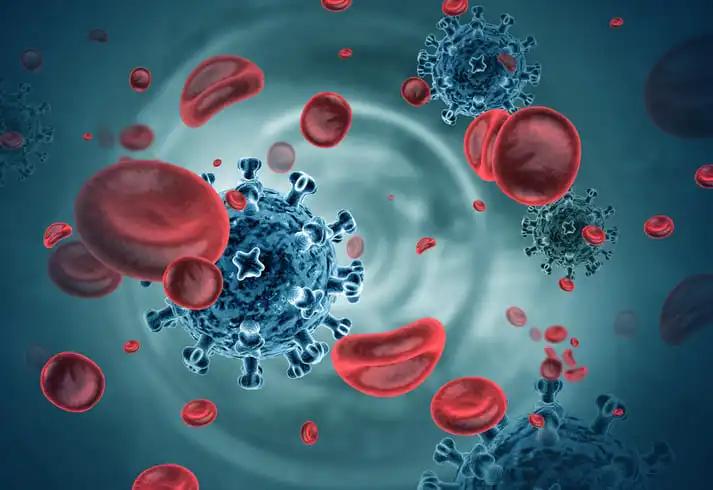KEY TAKEAWAYS
- The study (NCT02874742) aimed to examine whether adding daratumumab to SOC myeloma induction regimens would help high-risk patients.
- Four Phase 3 RCTs were assessed, eliminating the GRIFFIN trial due to a lack of PFS events. The meta-analysis compared daratumumab + SOC to SOC alone using ASH 2019 data.
- Daratumumab + SOC was preferred for PFS in standard-risk patients (HR 0.589, 95% CI 0.502-0.691, P < 0.001). The pooled HR for PFS favored daratumumab + SOC in high-risk patients (HR = 0.799, 95% CI = 0.609–1.047, P = 0.0104).
- A P < 0.001 for Cochran’s Q test and an I2 statistic above 50% indicated study variability.
- The study showed that daratumumab increased PFS in both standard-risk and high-risk SOC myeloma induction regimens.
When the CD38 monoclonal antibody daratumumab was added to standard-of-care (SOC) myeloma induction treatments, the responses were stronger. In the Phase 3 study that compared daratumumab + SOC to SOC, the daratumumab combinations always did better. The study aimed to see if the idea that adding daratumumab to SOC induction regimens helps high-risk patients is true. Researchers found four phase 3 clinical trials (RCT) in which recently diagnosed patients with myeloma were given either daratumumab + SOC vs. SOC. The GRIFFIN trial was ruled out because there was no progression-free survival (PFS) events. Using the fixed (Mantel-Haenszel) model, a meta-analysis of 3 RCTs with new data from ASH 2019 (ALCYONE, MAIA, CASSIOPEIA) was done to find out the difference between daratumumab + SOC and SOC. Two homogeneity tests, the X2-based Cochran’s Q test, and the I2 statistic, were used to determine if the results (effect sizes) from different studies were the same. Researchers thought there was variability when the P value of Cochran’s Q test was less than 0.1, and the I2 statistic was higher than 50%.
The pooled hazard ratios (HR) for patients at standard risk for PFS were HR 0.589 (95% CI 0.502-0.691; P< 0.001) in favor of daratumumab. The Q-statistic for PFS (P= 3.462; df= 2; I2 = 42.23), which shows how similar studies are, points to this. The pooled hazard ratios (HR) for PFS in high-risk patients were HR 0.799 (95% CI 0.609-1.047; P= 0.104) in favor of daratumumab. The Q-statistic for PFS (P= 1.306; df= 2; I2 = 0.00) shows that the studies are all the same. The researcher’s meta-analysis shows that adding daratumumab to SOC myeloma induction regimens stopped the disease from worsening in both standard-risk and high-risk patients, though the effect was stronger in standard-risk patients. The ALCYONE trial (Mateos et al. ASH 2019) and the MAIA trial (Bahlis et al ASH 2019) showed that this benefit seems to improve with longer follow-up. More needs to be done, like getting more high-risk patients into bigger daratumumab induction trials and keeping track of them for longer. The study demonstrated that daratumumab increased PFS in both standard-risk and high-risk SOC myeloma induction regimens.
Source:https://meetings.asco.org/abstracts-presentations/186267
Clinical Trial: https://clinicaltrials.gov/ct2/show/NCT02874742
Nisha Joseph, Craig C. Hofmeister, Madhav V. Dhodapkar, Lawrence Boise, Sagar Lonial, Madhusmita Behera, Jonathan L. Kaufman, Ajay K. Nooka/ Efficacy of daratumumab + SOC versus SOC in myeloma induction regimens, by risk-stratification: Meta-analysis of phase III randomized control trials./J Clin Oncol 38: 2020 (suppl; abstr e20512) DOI 10.1200/JCO.2020.38.15_suppl.e20512



